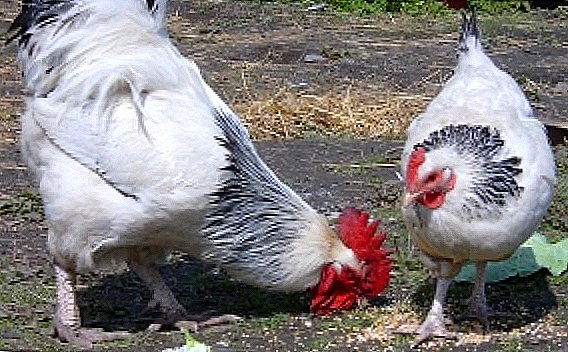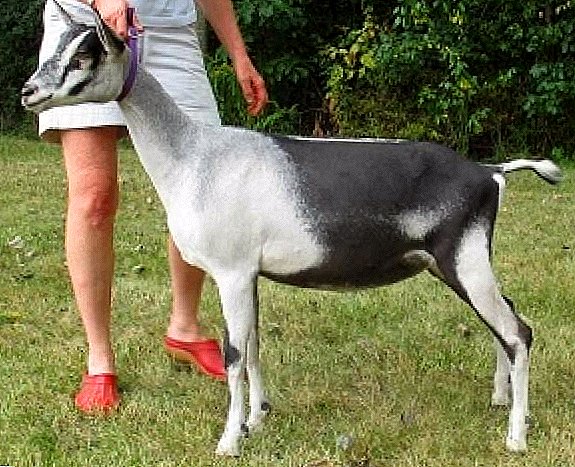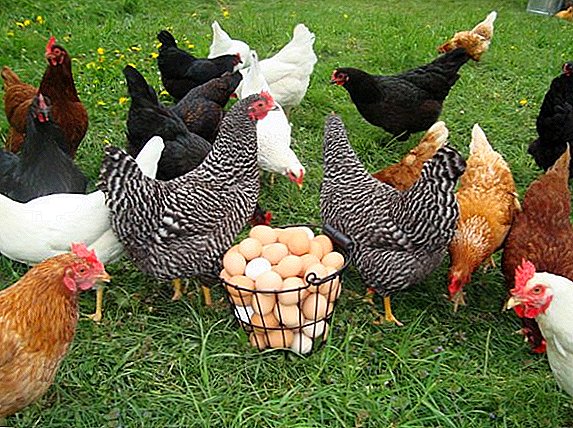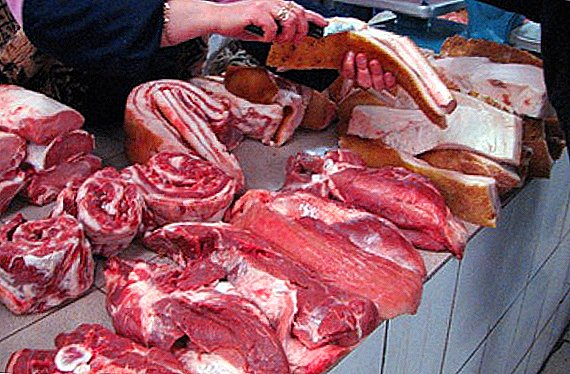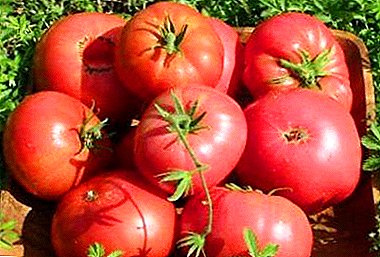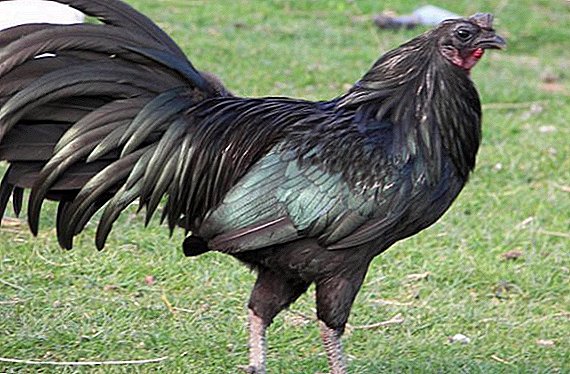 Today in the world there are a huge number of varieties of chickens. Some breeds were bred by breeders to obtain large quantities of meat products, while others became exquisite decorative ornaments for manors and bird gardens. However, some varieties of chickens did not cross and remained intact for hundreds of years. One of these varieties came to us from the Indonesian island of Sumatra.
Today in the world there are a huge number of varieties of chickens. Some breeds were bred by breeders to obtain large quantities of meat products, while others became exquisite decorative ornaments for manors and bird gardens. However, some varieties of chickens did not cross and remained intact for hundreds of years. One of these varieties came to us from the Indonesian island of Sumatra.
History reference
Homeland chickens Sumatra is an island nation from South Asia, namely - Indonesia. This breed of fighting birds is one of the most ancient on Earth. Her ancestor is considered to be a wild green chicken, which met in the jungles of Papua New Guinea, Vietnam and Indonesia thousands of years ago.
Did you know? In Bali, cockfighting is considered a ritual of sacrifice. Historians have found that the Balinese drove cocks for fighting since the beginning of the tenth century.
In 1847, the fighting chickens of Sumatra were brought into the United States, where they almost immediately became popular in the society of poultry farmers. Later, the Dutch, who are the world's most famous breeders, created a miniature replica of chickens from Sumatra. Today, this breed of birds is bred and maintained throughout the world. But Sumatra is the most popular in Asian countries, where one of the most popular occupations are cock-fights. 
Description and Features
The beautiful guise of chickens from Indonesia hides the fighting spirit of a bird that is aggressively opposed to other birds. Sumatra has exquisite distinctive features that allows you to use it for decorative purposes.
Check out the fighting breeds of chickens: shamo, ga dong tao.
Exterior
Characteristic distinguishing features of Sumatra:
- roosters have sharp triple or double spurs;
- belly taut, on a flat chest contains a lot of feathers;
- the roosters have a red comb; in chickens it is either completely absent or grows rather small;
- earrings and face painted in purple;
- the beak is very strong, of medium length, slightly curved at the end;
- the neck is strong and long, has a slight bend, gradually passes into a wide back, which gradually tapers to the tail;
- the tail is long, with thick dark magenta plumage;
- legs strong, rough, dark shades with a glossy sheen;
- the head is no different from other fighting breeds of chickens (it has a carmine color).


Coloring plumage
The color of the plumage is dark with a glossy sheen. There is no monotonous color over the whole area of plumage. The colors range from purple-carmine to dark scarlet. Sometimes there are lighter colors: cement, gray. In adult roosters on the plumage shades of burgundy and aquamarine colors can be seen.
Weight indicators
The weight of an adult rooster can reach 2.5 kg, the weight of a chicken varies from 1.8 to 2.3 kg. A dwarf variety of chickens from Sumatra, which was bred in Holland, is called bantam. The weight of roosters of this variety varies from 0.85 to 1 kg, chickens - from 0.7 to 0.8 kg. 
Character and livability with other rural animals
As you already understood from historical information, the breed of chickens we are considering is aggressive, fearless and fighting. Roosters Sumatra have a temper temper and pugnacious temper. These birds are very active, constantly exploring the territory allotted to them.
Important! If you are going to start sumatra to get eggs, then you should know that the duration of productivity of Indonesians is 3-5 years.
Chickens are less aggressive, open to people and without any problems go to contact. If the henhouse will contain more than one rooster, then with almost 100 percent probability you will see cockfights for the championship in the chicken kingdom. However, roosters are less aggressive towards people, often anger appears only after provocations. To keep the breed of chickens Sumatra with other representatives of farm animals should not be, because in this case, to avoid regular fights will not work. 
When it starts to nest and what egg production per year
To keep Indonesians for the purpose of egg income is not a profitable business. Layers start laying eggs no earlier than eight months of age, with the full maturation of the birds not earlier than the age of two. In one calendar year, the layer can carry no more 150 eggs (maximum rate). If we talk about some average values, the poultry farmers take 90 eggs a year as a standard. The average weight of one egg of a sumatra layer is 60 g, the weight of an egg of dwarf species does not exceed 30 g. In addition, during the incubation period, the weight indices decrease slightly.
It is interesting to read about the benefits and use of chicken eggs.
Maternal instinct
Like other ancient and wild breeds of chickens, untouched by breeders, Indonesians are different wonderful maternal instincts. Birds carefully incubate their offspring, showing love and tenderness to it. Moreover, sumatra chickens can sit out and other people's eggs. This is often used by breeders, throwing the eggs of those hens whose maternal instinct is poorly developed in Sumatra. 
What to feed
Feeding chicks and adults is different. In addition, if you are going to have an Indonesian in your chicken coop, then you need to know how to feed them during the molting period.
Chicks
Feeding chicks in the first few weeks of their life should consist of ground hard-boiled eggs, chopped cereal cereals, greens and clean water. At the same time you need to follow some basic rules of feeding:
- The intensive growth and excessive activity of babies require considerable expenditure of calories, this should be taken into account and not limited to the nestlings in food;
- to build muscle tissue is strictly necessary protein, which chickens should receive along with boiled potatoes, dairy products, oats, rye;
- in young animals, bone tissue develops quite quickly, so you need to take care of a sufficient amount of calcium in the diet, it is present in bone meal and in some feed additives for chicks;
- if you want to keep all young stock, then you need to adhere to this feeding mode: the first 10 days feed every 2 hours, then the intervals should be increased by one hour, and starting from one month of age, the chickens should be fed at least 5 times a day.

Adults
The peculiarities of feeding an adult herd of Indonesians are familiar to everyone, because they are the same as in the case of other breeds of chickens.
Everything you need to know about the diet of chickens from Sumatra:
- The main daily dish for the inhabitants of the coop - dry grain;
- In the summer period, chickens should be fed with fresh greens, which should be chopped beforehand; in winter, greens should be served in a dried form;
- To maintain the muscle mass of roosters in the diet should include a sufficient amount of protein, which is contained in meat waste and legumes;
- from the beginning of November to the end of March, the total amount of daily food per individual should be increased by 10-15%;
- for breakfast, the best mixes are best;
- We should not forget about the mineral and vitamin supplements that contribute to the normal formation of feathers and increased egg production.
Remember that there should always be a container with water in the hen house, especially during hot periods of summer. 
During the molting period
In this period of time, chickens should fully restore the "coat". But for such a process they need various vitamins and minerals. In stores you can purchase special foods that are intended for inclusion in the diet during the period of molting. In addition, during this period of time, the hens need to be given more corn.
Did you know? In the tomb of Emperor Tutankhamen there are images of chickens. This suggests that these birds came from Asia to the African continent more than 3,300 years ago.
What else to take care
When building a chicken coop, care must be taken to build a shelter and a walking yard. Inside the shelter there should be high roosts (in such conditions Indonesians feel comfortable). Walking yard is best done large and spacious, but with a high fence. The fact is that at the sight of danger chickens of this breed can fly high.
In the hen house nests are necessarily built, preferably on the basis of dry straw. Egg-laying will occur in nests. You should also take care of the construction of drinking bowls and feeders. In most cases, they are created long and narrow, that is, common. The material from which to build troughs and drinkers is wood (you can use stainless metal).  In winter, especially during the period of severe frosts, Indonesians can freeze, ache and die. Experienced poultry farmers recommend building special chicken coops with heating, where you can maintain the optimum temperature and humidity in the cold season. In winter, the temperature in the coop should be in the range of + 15-20 ° C, humidity - 40-60%.
In winter, especially during the period of severe frosts, Indonesians can freeze, ache and die. Experienced poultry farmers recommend building special chicken coops with heating, where you can maintain the optimum temperature and humidity in the cold season. In winter, the temperature in the coop should be in the range of + 15-20 ° C, humidity - 40-60%.
Learn how to build a chicken coop for the winter with your own hands.
Common diseases
The most commonly diagnosed in Indonesia is mycoplasmosis, an infectious disease that affects the respiratory system of birds.
In addition, Sumatra can affect such diseases:
- pullorosis (typhoid);
- salmonellosis (paratyphoid);
- streptococcosis;
- tuberculosis;
- smallpox (diphtheria);
- omphalitis;
- ornithosis;
- neurolyphomatosis;
- colisepticemia;
- coccidiosis.
Important! Sumatra is most commonly exposed to mycoplasmosis, an infectious disease that can be transmitted from parents to children. The first symptoms of the disease are wheezing in the trachea, shortness of breath and loss of appetite. If you have found similar symptoms in your birds, you should immediately call the veterinarian and begin emergency treatment.
It is important to understand that it is impossible to engage in self-diagnosis and treatment without appropriate experience. If you notice that your bird has uncharacteristic behavioral traits, it is best to call the vet. 
Advantages and disadvantages
The advantages of Indonesia include:
- high decorative qualities of a bird;
- fighting, lively character;
- high degree of endurance chickens.
The breed also has its drawbacks:
- It does not tolerate frosts, so a chicken coop should be built for these chickens with heating and an air humidity control;
- poultry meat has low taste qualities (hard, with multiple veins);
- egg production at a low level.
Video: chickens breed Sumatra
In this article we talked in detail about the features of chicken from the Indonesian island of Sumatra. If you are going to grow these chickens for decorative purposes, then try to follow the rules of feeding and care, then the plumage of the bird will be dense, bright and beautiful.



